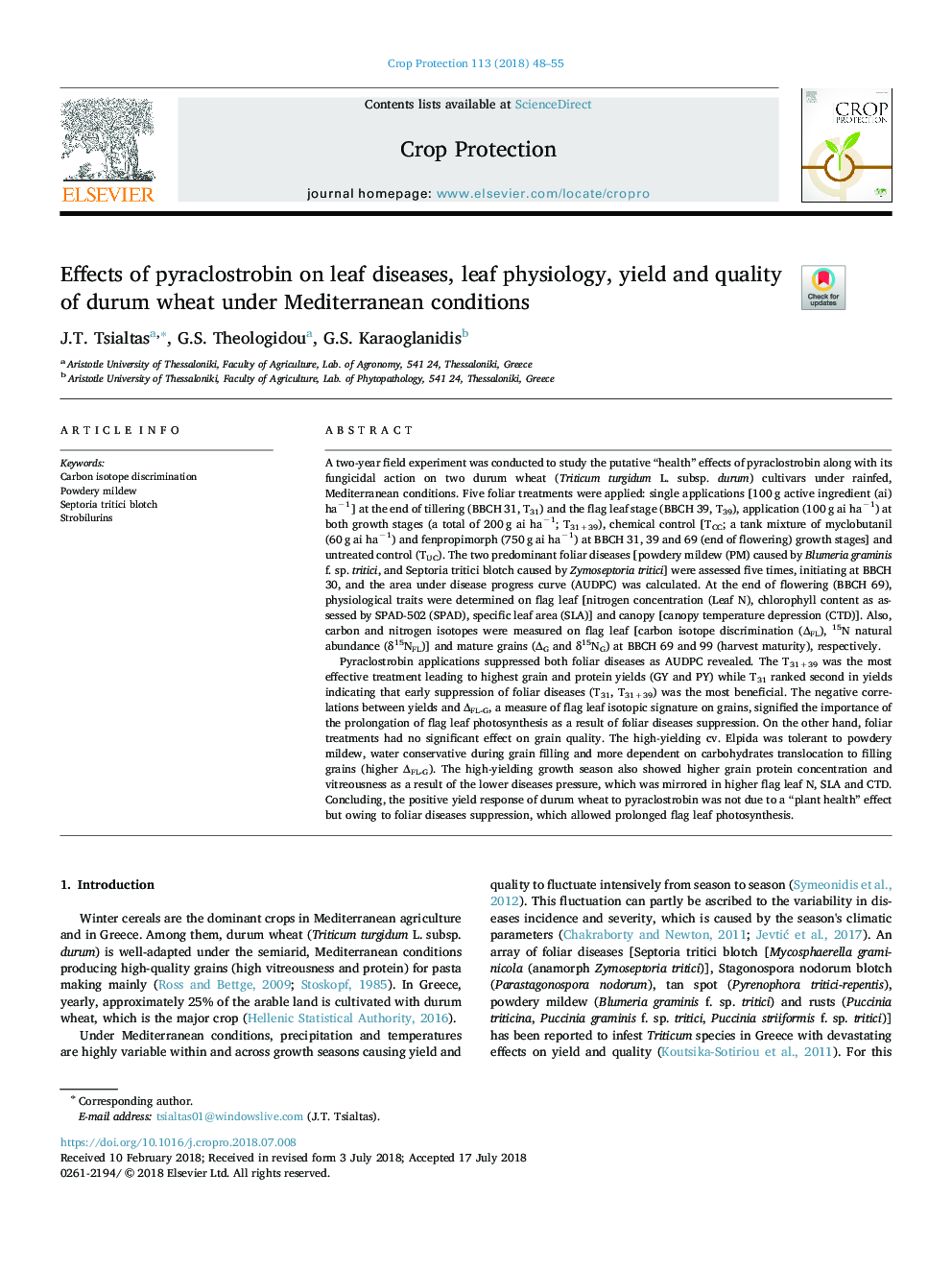| Article ID | Journal | Published Year | Pages | File Type |
|---|---|---|---|---|
| 8877878 | Crop Protection | 2018 | 8 Pages |
Abstract
Pyraclostrobin applications suppressed both foliar diseases as AUDPC revealed. The T31+39 was the most effective treatment leading to highest grain and protein yields (GY and PY) while T31 ranked second in yields indicating that early suppression of foliar diseases (T31, T31+39) was the most beneficial. The negative correlations between yields and ÎFL-G, a measure of flag leaf isotopic signature on grains, signified the importance of the prolongation of flag leaf photosynthesis as a result of foliar diseases suppression. On the other hand, foliar treatments had no significant effect on grain quality. The high-yielding cv. Elpida was tolerant to powdery mildew, water conservative during grain filling and more dependent on carbohydrates translocation to filling grains (higher ÎFL-G). The high-yielding growth season also showed higher grain protein concentration and vitreousness as a result of the lower diseases pressure, which was mirrored in higher flag leaf N, SLA and CTD. Concluding, the positive yield response of durum wheat to pyraclostrobin was not due to a “plant health” effect but owing to foliar diseases suppression, which allowed prolonged flag leaf photosynthesis.
Related Topics
Life Sciences
Agricultural and Biological Sciences
Agronomy and Crop Science
Authors
J.T. Tsialtas, G.S. Theologidou, G.S. Karaoglanidis,
